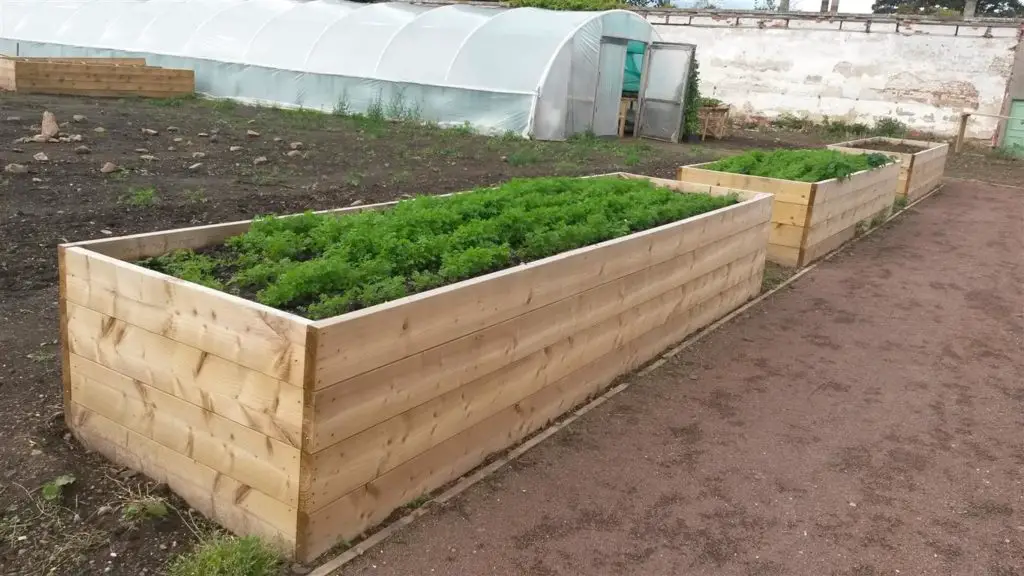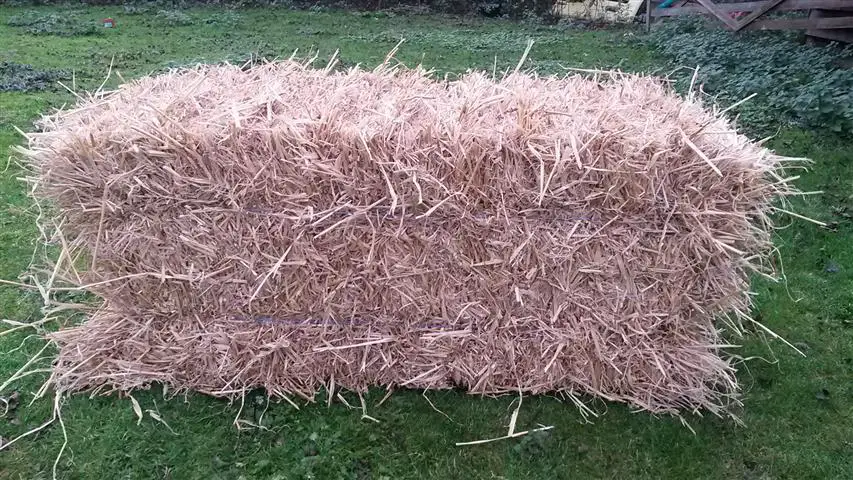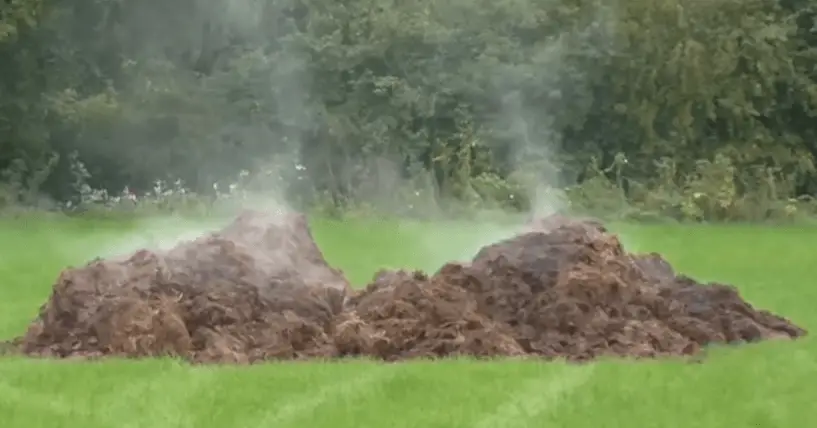Cheapest Way To Fill A Raised Garden Bed – No Dig Vegetable Gardening Blog
There are many reasons why you should build a raised bed garden, particularly if you are growing vegetables. However if you are planning on building a taller raised bed so that you have ease of access or maintenance, or perhaps to work from a wheelchair – You may have an expensive problem on your hands!
Without a doubt, the cheapest way to fill a raised garden bed is to provide your own materials! Home-made compost, topsoil, forest debris and old bricks can all be used to fill in a deep raised bed garden at little cost.
How do you fill in a deep raised bed without ‘breaking the bank’ Even with the advantages a Raised Bed Garden has to offer, compost is fairly expensive and filling a raised bed with a compost/soil mix that will keep in line with the principle of no dig gardening could cost a small fortune.
 Deep Raised Beds like these would cost a small fortune to fill with quality compost mix!
Deep Raised Beds like these would cost a small fortune to fill with quality compost mix!
This is a list of volumes you would need for raised beds of various sizes, including the base build-up material.
9 foot by 3 foot by 30 inches high……67.5 ft3
Advertisements
9 foot by 3 foot by 24 inches high……54 ft3
9 foot by 3 foot by 18 inches high……40.5 ft3
9 foot by 3 foot by 12 inches high……27 ft3
For a 9 x 3 bed every six inches high the volume would be equal to an additional 13.5 cubic foot of material.
6 foot by 3 foot by 30 inches high……45
6 foot by 3 foot by 24 inches high……36
6 foot by 3 foot by 18 inches high……27
6 foot by 3 foot by 12 inches high……18
For a 6 x 3 bed every six inches high the volume would be equal to an additional 9 cubic foot of material.
Cheap ways to fill a deep raised bed would be
- Fill the bottom half with broken branches, twigs and general forest waste. Add green material like grass clippings, weeds (without roots or seeds) comfrey cuttings, kitchen vegetable waste. Top up with 6 inches of topsoil and home-made compost mix.
- In deep beds, lay straw bales on their sides to lift the bed 14 inches or so from the bottom. Add green material as above until six inches from top then fill with topsoil/compost mix
- Fill the bottom half with cardboard and old newspapers (no glossy stuff) then follow instructions for 1 & 2
- If you have a deep bed but only plan growing surface veg like cabbages, tomatoes, lettuce, kohlrabi, peppers and the like. Then you can fill the bed with rubble and leave six inches for the compost mix.
- If you plan to grow deep root veggies then you need the full depth of the raised bed for the roots to develop. A great way to fill this would be to pile in all the old compost material you have – even if it is not fully composted – right up to around 9 inches or so from the top. Finish off with a good compost/soil/sand mix for tap-root vegetables.
The least preferable way to fill a deep raised bed in my opinion is option 4. Rubble such as old stones or bricks do make good drainage that is true. And they do take up a lot of space – which is the main goal.
However, if you forego the rubble and use the straw bales, old timber, or cardboard/straw mix you have a good advantage over the rubble method. The straw bales, sticks and cardboard will eventually compost down and add their own nutrients to the bed after 3 or 4 years.
 Straw bales are a cheap and efficient way to take up space in a deep Raised Bed garden
Straw bales are a cheap and efficient way to take up space in a deep Raised Bed garden
This means that you have a nutrient-rich growing area, working very much like a Hugelkultur or even Lasagna garden – both of which are excellent vegetable growing methods in their own right.
Generally speaking it is cheaper overall if you are only growing ‘surface’ vegetables as listed above, because you do not need the volumes of infill required for deep beds.
However if you have a handy source of the other materials listed like broken branches, old lumber or forest debris, then even filling a deep bed presents no real problems with cost.
Studies show that most vegetables grow in only the first few inches of top soil – from 4 to 6 inches, so there is really no need to fill in your deep raised bed with expensive compost/soil material unless you are planting deep root parsnips or potatoes for example.
Yet another way to fill a deep bed is to use horse manure if you have a handy source for it.
Keep in mind that if you use fresh manure then you will in effect be making a Hot Bed garden which will heat up for the first 4-6 weeks before cooling down as the decomposing process slows.
 This steaming horse manure is excellent for a Hot Bed Garden
This steaming horse manure is excellent for a Hot Bed Garden
This method of gardening means that you can extend the growing period by up to two months overall.
Well-rotted horse manure is perfect to lay under the 6 inches of topsoil mix in any raised bed and is particularly good for leek plants which love well-rotted manure.
So there you have it – many ways to fill in a deep raised bed garden without ‘breaking the bank’!
James
Best Selling author of several no-dig gardening books, James has over 40 years of gardening knowledge and experience to share with like-minded gardening enthusiasts.















![Toni Kroos là ai? [ sự thật về tiểu sử đầy đủ Toni Kroos ]](https://evbn.org/wp-content/uploads/New-Project-6635-1671934592.jpg)


